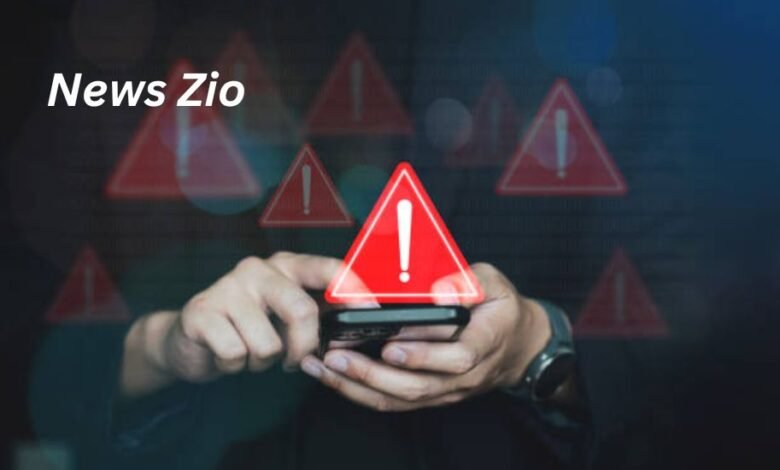Understanding content://cz.mobilesoft.appblock.fileprovider/cache/blank.html in Android

If you’ve ever explored your Android device logs, inspected crash reports, or tinkered with app cache, you might have stumbled upon a strange-looking string:
content://cz.mobilesoft.appblock.fileprovider/cache/blank.html
At first glance, it looks confusing — a mix of technical jargon and file paths. For everyday users, this often raises questions: Is it an error? Malware? A hidden file? Or just a normal part of how apps work?
This article will break down exactly what this URI means, why you may see it, whether it is safe, and how it fits into the larger Android ecosystem. We’ll also look at AppBlock, the app behind this file path, and provide troubleshooting tips if you encounter related issues.
What is a content:// URI?
To understand the entire string, we must first decode its prefix: content://.
-
Content URIs are a secure way for Android apps to share files or structured data.
-
Instead of exposing raw file paths (
file://), Android encourages apps to usecontent://through a Content Provider. -
These URIs act like controlled gateways: only apps with permission can access the data.
So, whenever you see content://, you’re looking at a managed, app-specific path.
Breaking Down the URI
Now let’s split the full string into its components:
-
cz.mobilesoft.appblock-
This is the package name of AppBlock, a well-known productivity app that blocks distracting apps and websites.
-
The developer is MobileSoft, with a focus on digital wellbeing tools.
-
-
fileprovider-
A FileProvider is an Android component that exposes files through
content://URIs. -
Instead of letting other apps directly peek into a file system, it creates secure, temporary URIs.
-
-
/cache/blank.html-
This refers to a cached file within AppBlock’s storage.
-
In most cases,
blank.htmlis a minimal HTML page (often empty or with just a skeleton tag structure). -
AppBlock uses it as a placeholder when redirecting a blocked webpage to a neutral screen.
-
Why Does AppBlock Use blank.html?
AppBlock’s main feature is blocking distracting apps and websites during scheduled times.
When it blocks a website:
-
Instead of leaving the user staring at a broken or error-filled page, it loads a local placeholder.
-
That placeholder is the
blank.htmlfile stored in cache. -
This creates a smoother experience: the site doesn’t load, but the user doesn’t get a confusing browser error either.
This is an elegant design choice — redirecting distraction to nothingness.
Is It Safe?
Yes, the blank.html file is completely safe.
-
It is not malware, spyware, or a virus.
-
It does not track you or harm your device.
-
It is simply a cached HTML file used internally by AppBlock.
If you see this URI in logs or debugging tools, it’s normal behavior. In fact, using content:// makes it more secure than old methods like raw file paths.
When Do Users Encounter It?
You may see content://cz.mobilesoft.appblock.fileprovider/cache/blank.html in these scenarios:
-
Debugging or Logcat Inspections
Developers, testers, or advanced users may notice it in system logs. -
Crash Reports
If AppBlock crashes while redirecting toblank.html, the path may appear in error logs. -
Blocked Websites
When browsing on Chrome or other browsers during an active AppBlock rule, the redirect may briefly point to this cached file. -
After Cache Clearing
If AppBlock rebuilds its cache,blank.htmlmay reappear freshly generated.
Troubleshooting Blank Page Errors
While the file itself is harmless, some users report getting “stuck” on a blank page. Here are solutions:
-
Clear Cache
-
Go to Settings → Apps → AppBlock → Storage → Clear Cache.
-
This forces AppBlock to regenerate its blank.html placeholder.
-
-
Check Blocking Rules
-
Disable or edit any active Quick Block, timers, or schedules.
-
Sometimes, AppBlock is simply doing its job too well.
-
-
Update AppBlock
-
Visit the Google Play Store and update to the latest version.
-
Many blank-page bugs have been fixed in newer releases.
-
-
Reinstall AppBlock
-
Backup/export your rules.
-
Uninstall and reinstall the app for a fresh start.
-
How Does FileProvider Work in Detail?
For more technical readers, let’s dive deeper.
-
Legacy issue: Before Android 7.0, apps could share files using
file://URIs. But this was insecure and caused crashes when file permissions didn’t align. -
Modern solution: FileProvider lets apps generate
content://URIs instead. These URIs are temporary, permission-checked, and scoped. -
Security: Other apps can’t simply access the file unless explicitly granted permission.
In this case, AppBlock’s FileProvider exposes only a cached HTML file (blank.html), nothing more sensitive.
AppBlock: The Bigger Picture
What is AppBlock?
AppBlock is a focus and productivity app available for Android, iOS, and browsers. It helps users cut distractions by blocking:
-
Mobile apps
-
Websites
-
Notifications
Why People Use It
-
Students use it to stay focused on studying.
-
Professionals use it during deep work or meetings.
-
Parents use it to enforce screen time limits.
Features
-
QuickBlock: One-tap blocking.
-
Scheduling: Block apps/sites during work hours.
-
Strict Mode: Prevents disabling without a password.
-
Sync: Works across devices (mobile + browser).
The blank.html file is just one small cog in this larger productivity machine.
Common Misconceptions
1. It’s a Virus
No. It’s a harmless placeholder file.
2. It Means My Browser is Broken
Not at all. If you see it while browsing, AppBlock is actively blocking something.
3. It’s a System Error
No. It’s app-specific, not an Android OS issue.
4. I Must Delete It
Not necessary. Clearing cache may remove and regenerate it, but deleting it manually is not required.
Related Blog and Forum Discussions
Tech forums and blogs frequently mention this URI in troubleshooting contexts. Most agree it’s:
-
Normal behavior for AppBlock users.
-
Not malware, despite how suspicious it looks.
-
Something you can safely ignore unless it causes user-experience problems.
This reinforces our conclusion: it’s an intentional design, not a bug.
Final Thoughts
content://cz.mobilesoft.appblock.fileprovider/cache/blank.html may look intimidating, but in reality, it’s nothing more than a cached placeholder page used by AppBlock to keep your browsing distraction-free.
-
It leverages Android’s secure Content URI system.
-
It prevents loading distracting sites during blocking schedules.
-
It is safe, normal, and part of how AppBlock works under the hood.
So the next time you encounter this URI in logs or your browsing, you can rest assured it’s just AppBlock helping you focus.
Mention of Blog
This detailed exploration is brought to you by News Zio, where we decode technical mysteries and make them understandable for everyone.



